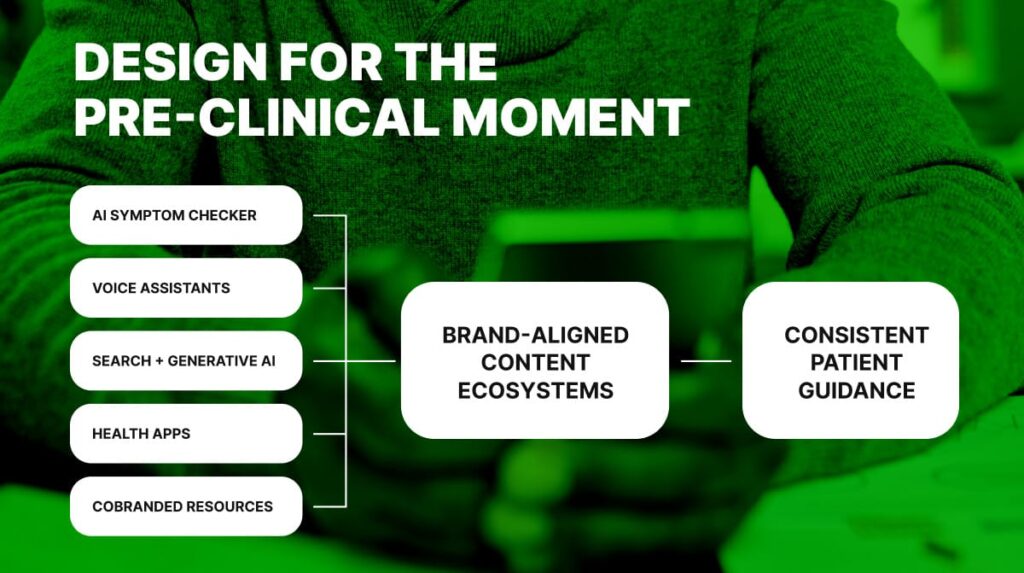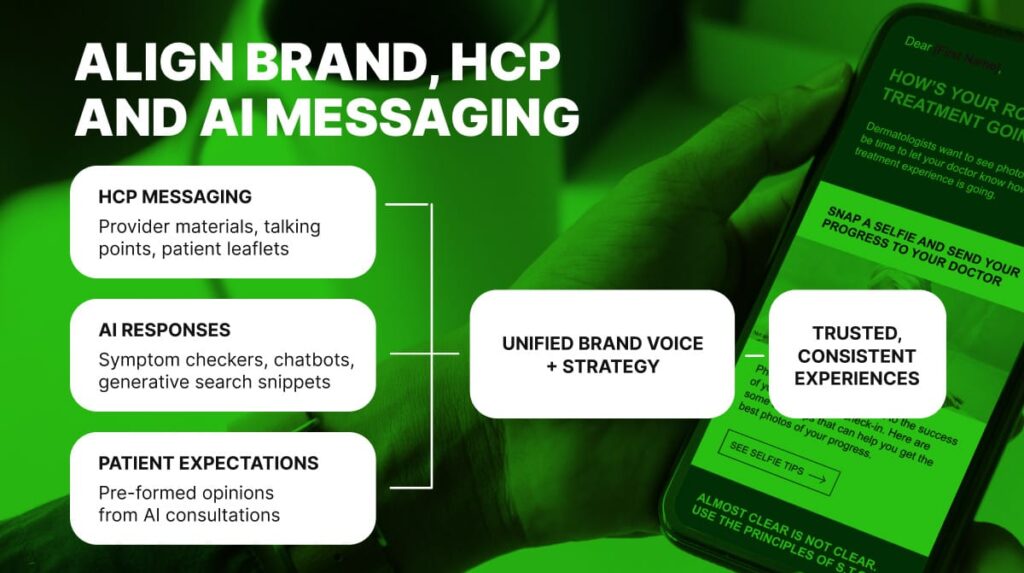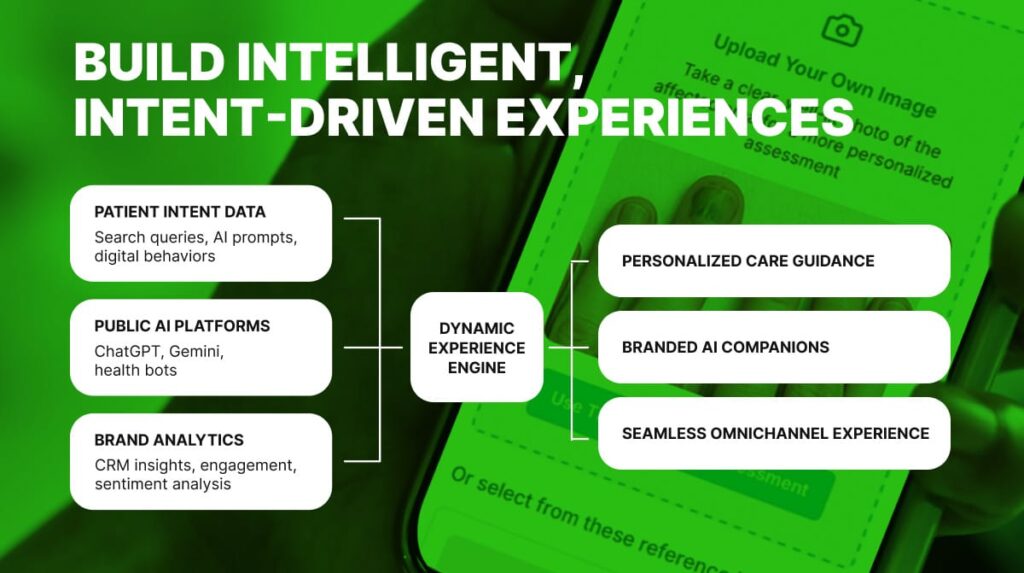The real patient-provider experience begins when someone asks AI “Why am I feeling this way?”
Imagine this: You’ve launched a breakthrough therapy. The science is sound. The marketing is flawless. But uptake is slow. Providers aren’t bringing it up. Patients aren’t asking for it.
Now picture the patient journey. Before the doctor visit, the patient has already spent hours with ChatGPT or a symptom checker. They arrive at the appointment armed with preformed opinions and requests for specific brands. Some skip the visit altogether, using telehealth as a quick route to the prescription they’ve already decided on.
This is the new front door to healthcare — and brands could be left standing outside.
The shift is subtle but seismic. “Dr. Google” was once a search for available information. AI is now replacing the first consultation. Patients are asking AI for symptom checks, second opinions, treatment insights and even emotional reassurance. The trust they once placed exclusively in HCPs is now shared with tools delivering instant, personalized answers.
In healthcare, the journeys of providers and patients are no longer parallel. Instead, they’re deeply interwoven. As marketers, we can’t just acknowledge this convergence. We must design experiences that reflect and support the full pathway.
WHAT HEALTHCARE BRANDS SHOULD DO
1. DESIGN FOR THE PRE-CLINICAL MOMENT

That AI consultation means patients arrive pre-informed — or misinformed. Providers are no longer the first line of interpretation.
- Create content ecosystems for AI environments that feel like digital waiting rooms — anticipatory, sensitive and guidance driven.
- Help shape understanding before the appointment through AI-native touchpoints.
- Explore partnering with existing symptom-checker platforms to deliver medically validated, brand-aligned content directly within AI interfaces.
This isn’t about replacing providers. It’s about supporting patients with credible, compassionate information when they need it most.
2. ALIGN BRAND, HCP AND AI MESSAGING

What AI tells a patient must align with what providers say and what your brand stands for. Inconsistency erodes trust.
- Start with a generative engine optimization (GEO) strategy to influence how algorithms surface and prioritize your content.
- Unify AI touchpoints, provider conversations and brand messaging to deliver a dynamic yet consistent experience across the patient journey.
- Ask yourself how your company would respond if a particular question were asked of ChatGPT. Then design predictive prompts, personalized journeys, conversational tools and integrated care guidance.
- Optimize for AI assistants and search to meet patients in the “Why am I feeling this way?” moment while building AI-driven patient support tools that complement provider guidance and ensure consistency across channels.
Health brands should treat AI strategy as part of the omnichannel strategy. It just starts earlier than ever before.
3. BUILD INTELLIGENT, INTENT-DRIVEN EXPERIENCES

Static messaging won’t meet patients where they are. To influence their journey, brands need to combine dynamic design with intent-based strategy.
- Public generative AI platforms like ChatGPT and similar tools are democratizing the first consultation. While empowering, they can also lead to uncertain outcomes.
- Use this as an opportunity to lead by creating branded or unbranded AI companion tools trained on validated content to guide patients with confidence.
- Consider developing your own symptom checker. Drive GEO and media traffic to it first and position it as the front door of your brand experience.
It’s critical to map content to patient intent, not brand terms. Patients are starting with real-world questions, not your brand site.




